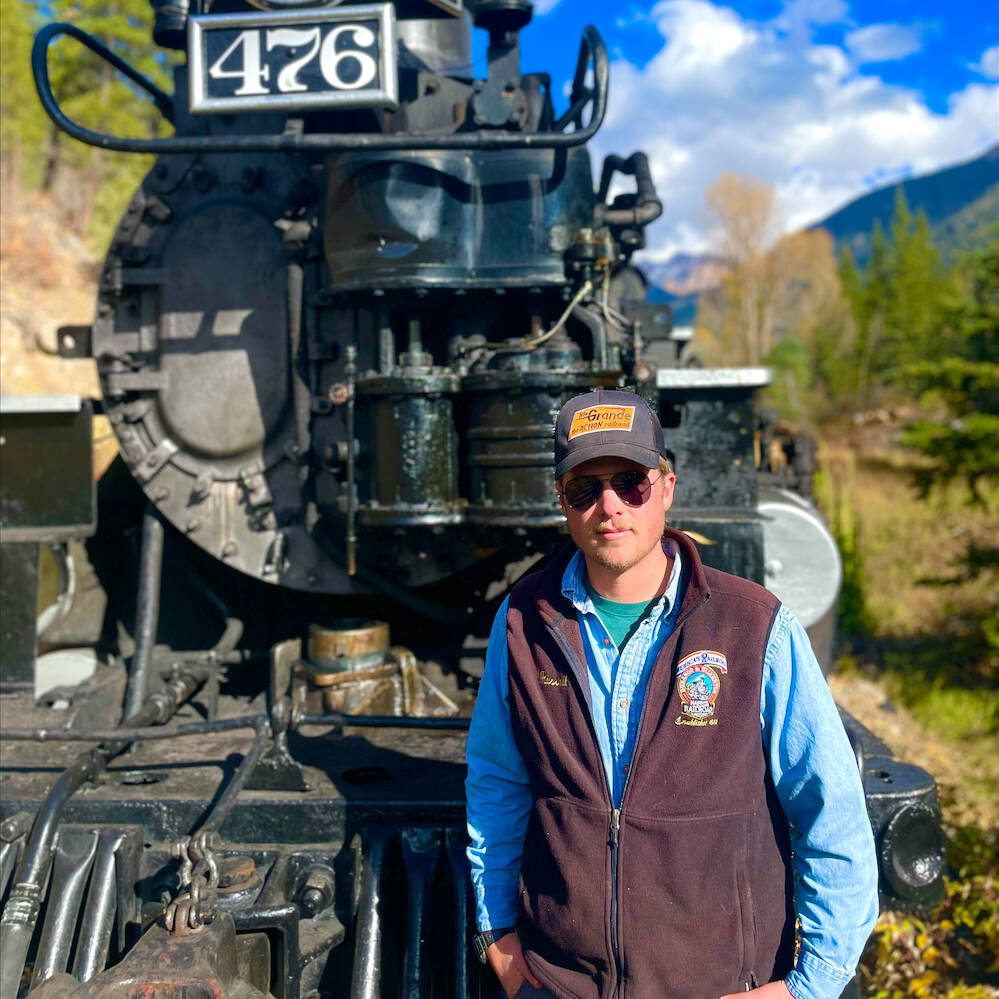
Railway preservation is important for museums and tourist railroads. But each non- and for-profit approaches this differently. For Special Events Coordinator Russell Heerdt of the for-profit Durango & Silverton Narrow Gauge Railroad, keeping the doors open, lights on, and wheels turning is a juxtaposition between individual organizations.
How did you get involved in rail preservation?
Russell Heerdt: My grandpa introduced me to trains at a really young age. He was part of preservation, beginning at age 17, while traveling around with Robert Richardson, Richard Kindig, and all the other big names at the time. He eventually did photo charters with the Durango & Silverton for about 15 years – mostly just for him and his friends – and had a video series called Machines of Iron, where he traveled the world and documented the last of steam railroading into the modern era.
Our family also had a 1905 steamroller, so that was a huge play in all this. My grandpa bought it from the city of Boulder, Colo., when he was 17. After retiring in 2008, he trucked it out to Iowa, where I’m originally from, and we restored it at a local shop. That was my first, actual step into preservation.
As far as the Durango & Silverton goes, all I originally thought of doing was graduate high school, spend the summer working at the local radio station, go to Iowa State, get my civil engineering degree, and see where that goes. Grandpa instead pushed me to hire out with the D&S, which I never thought was even possible. I applied, got the job, and the day after I graduated high school, got on a plane to Durango. I spent 3 months over the summer there working as a brakeman and decided to go back for my second as a fireman. That was when it clicked that college was not my thing. I stayed on while having worked through the many challenges we have faced in the last 9 years, including the COVID-19 pandemic and just the ups and downs of the whole industry. At that point, I was pretty-well established as I got promoted to engineer and was working in the shop.
Our special events manager stepped down right before THE POLAR EXPRESS™, which is a huge part of our operating season. Because of my grandpa’s history with photo charters and growing up around that stuff, I thought to myself, that’s something I think I could do really well at. I talked to our general manager, who agreed to me managing THE POLAR EXPRESS™ to get us through the winter. Over the past two years in addition to THE POLAR EXPRESS™, my main priority has been photo charters – both private and company sponsored – as well as film and photography shoots. This is where I feel I have a real strong suit being able to manage the logistics of those events.
As a young preservationist at age 26, what have you found to be the most challenging aspects in the industry?
Russell Heerdt: The biggest challenge is how we go about doing business versus others in either non- or for-profit, while still maintaining a historical operation in the 21st Century. The D&S can be juxtaposed against many other prestigious heritage railroads across the country. Most organizations are a non-profit (501-c3) organization where preservation to the nut and bolt is the mission and funding comes from grants, donations, and special events. Most do an incredible job of being a living history museum and maintaining their core values while not venturing into the for-profit side. We in Durango do pride ourselves with preservation that takes place here with the sized fleet we run and maintain, and how could you not be? But that is only possible by attracting sizable ridership year over year. Without generations of large ridership and growth, we would not see a company like we have today.
Ridership ultimately keeps the railroad open, but now we also maintain history in the most genuine way possible without sacrificing business opportunities. Al Harper, our CEO and owner, has a motto that’s in our timetable, rule books, and training information: “We are the guardians of history, and the best way to preserve history is to make its presentation so interesting and exciting that people are willing to pay a fair price for the great experience.”
That’s how we go to business, whether it’s THE POLAR EXPRESS™ and the other events, or just the regular ride to Silverton. At the end of the day, we do have to make money, but we also have an obligation, morally, to preserve the history of Durango, Silverton, and the railroad itself.
The other challenge is recruiting and training for an operation this large. Because of the contract work and notoriety we’ve gotten with the Rio Grande Southern No. 41 restoration, our shop services exploded and we now maintain one of the largest staff specifically dedicated to maintaining both steam locomotives and turn-of-the-century coaches. We were a 6-month business, now we’re a 9-month business and soon to be 12 where we’re running trains consistently. One of the most pivotal parts of that growth will always be maintaining a staff with skills you rarely can just hire off the street.
What’s been the most rewarding for you so far?
Russell Heerdt: There’s quite a few things. The biggest is sharing history with guests because that is why we’re here as preservationists. One of my favorite jobs is working as a conductor to go through collecting tickets, talking to the kids and families, and explaining to them why we’re here, what we do, and that this is more than just a train ride. I often run into people that have booked the ride but have little knowledge of the railroad’s history and mission. To be able to explain to them how and why the railroad was started, the different ownerships, the commitment to maintaining what we are as a business and historical landmark while continuing to operate in the 21st Century, it brings a lot of joy to me.
Being here long enough, we’ve also got young people who rode the train as kids and teenagers that are now hiring out because they talked to one of us. And then there’s being able to train them as new brakemen in a way to maintain the historical operating practices.
Then there’s kind of going back to what we’ve already talked about… Seeing the business develop into what we are today. We didn’t give up in the fire, we didn’t give up during COVID, and having the leadership that we have now brought us into a new age.
Where do you see rail preservation as it is today and what do you hope it’ll become for the future?
Russell Heerdt: The industry has the same ambition and passion as it did the 70s, but with more safety, better accountability, and quality of work. We have more engines getting rebuilt and running again than we’ve ever seen but are also being rebuilt in a way that they’re going to continue to run.
In the future, I think because we’ve got this young generation that is open to new ideas and technology, but also willing to train the next generation already, we’re going to have a good 50-60 solid years going at it and not have to worry about where the next generation is going to come from. The willingness to put in the effort, train the new people, and open the inclusivity of the current preservation world is unlike anything I’ve ever seen, which I think is very important.
What advice would you give for any young person looking to get involved in the industry?
Russell Heerdt: Do it. If you have a passion for it, a true passion, you’re never going to work a day in your life. It is not easy and you’re never going to work as hard as you will in rail preservation. The biggest thing that I’ve learned and what I try to instill in new brakemen and hires, companywide, is never say: “I know.”
Because that old guy in the corner with a cup of coffee is going to shut up and let you make your mistakes. If you show up every day, ask the questions, have the patience and take the time to learn from those that came before us, you’ll find that old guy and open up an encyclopedia of knowledge you never thought you’d get. You can really go somewhere.






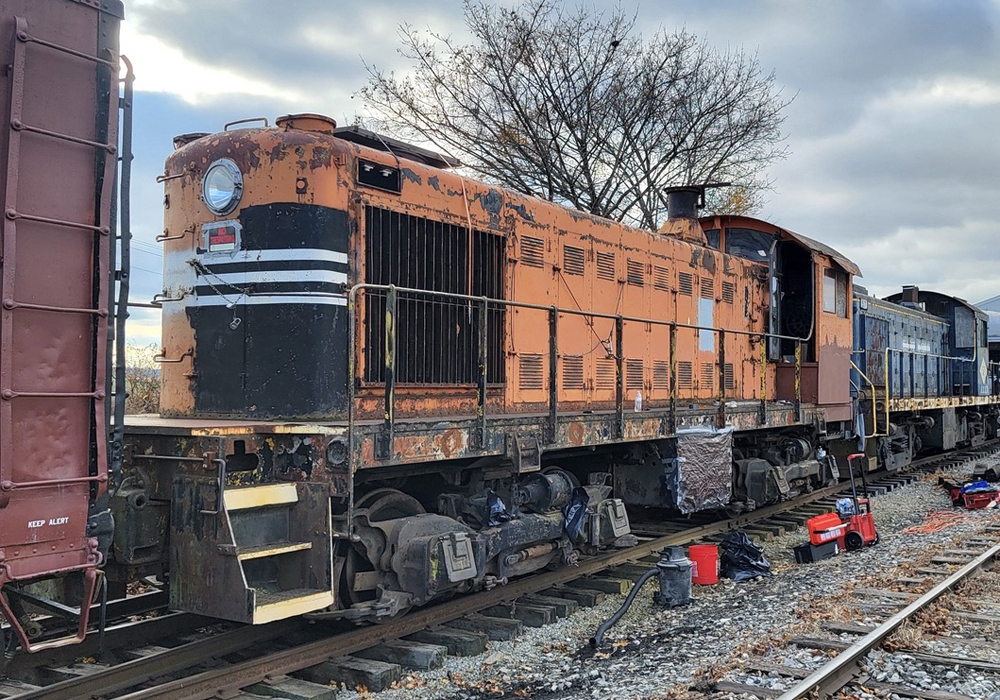
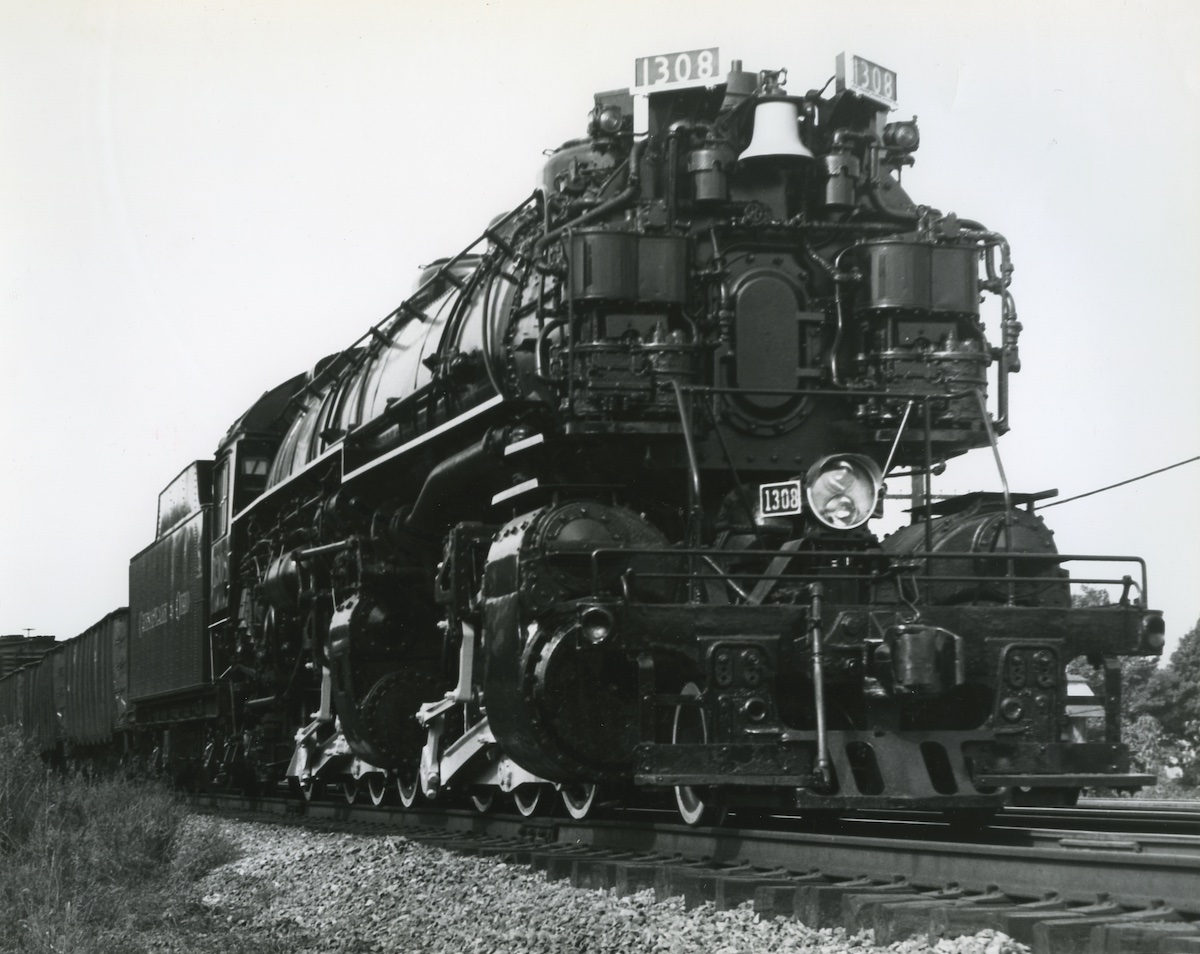
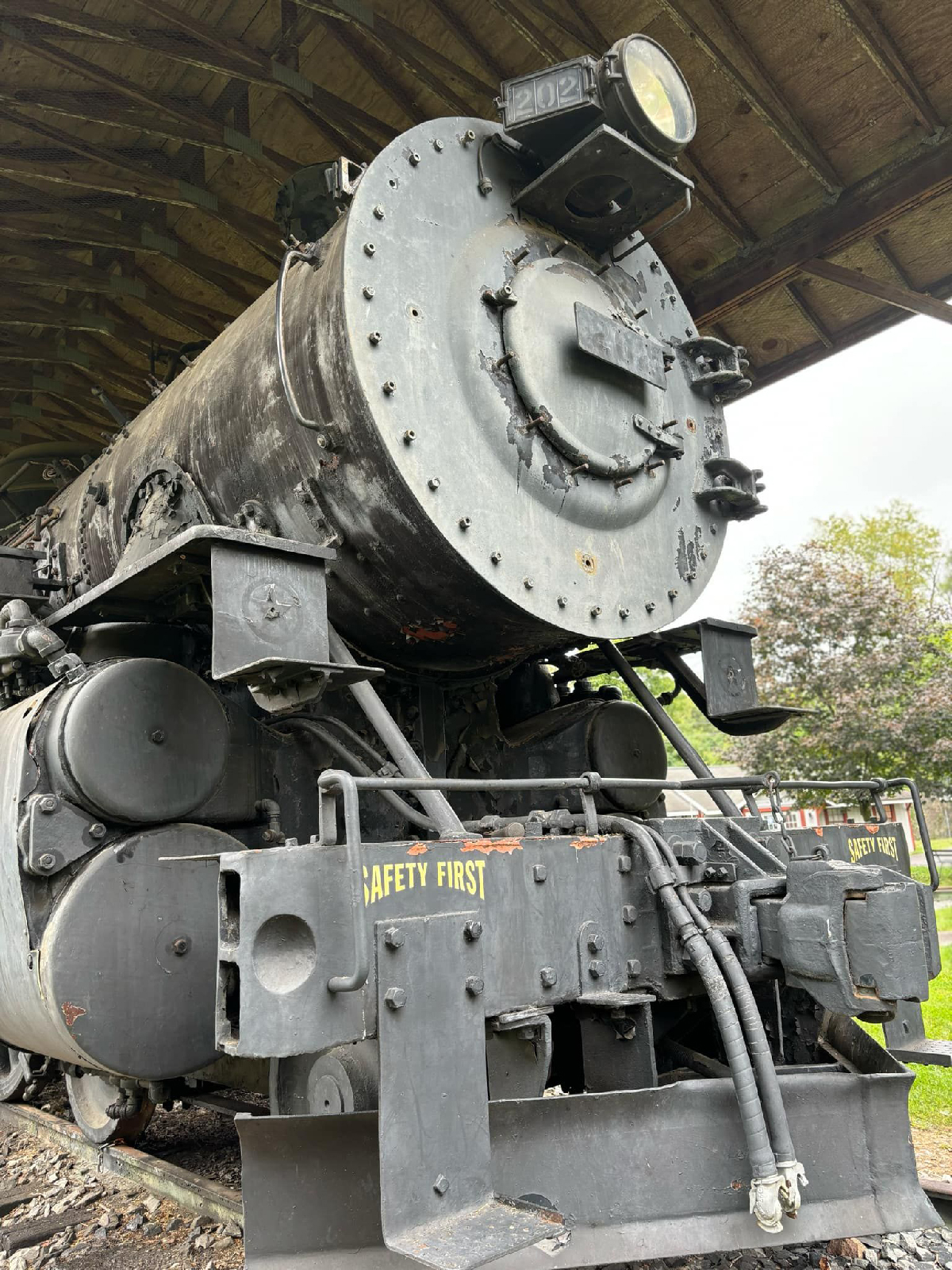
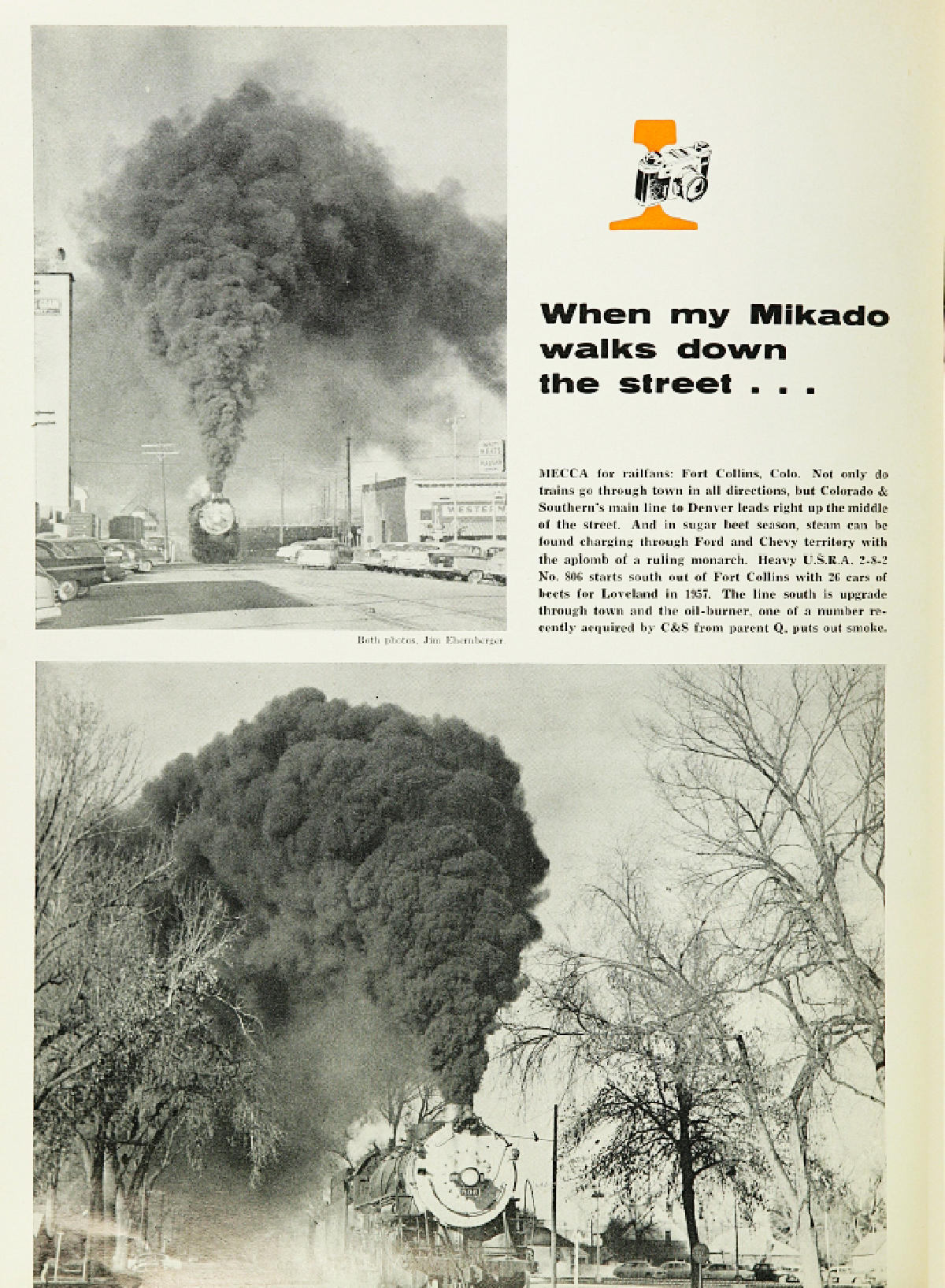




Another Great Article of Young Guns-Keep Them Coming!